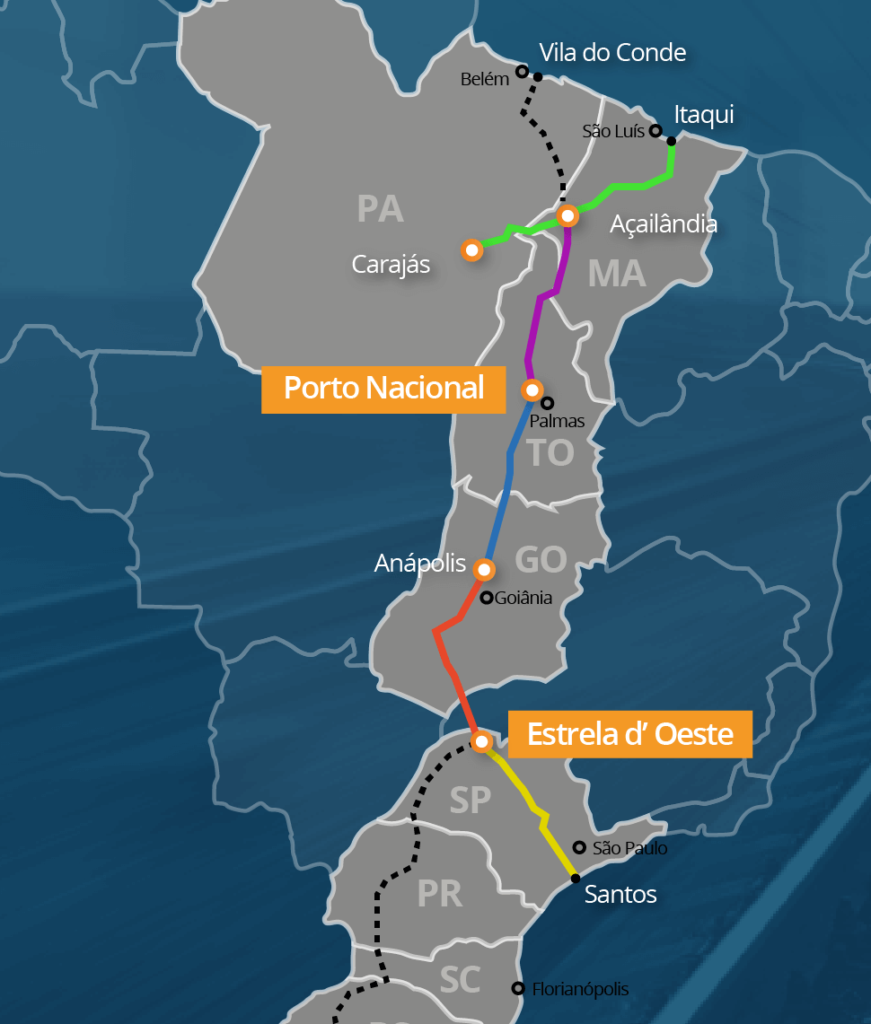
Transcontinental Railroad: Understand everything about the project
The Railroad sector is extremely important for the development of any country. It is through the railroad lines that the possibilities for transporting cargo and people are increased. Here in Brazil, for example, there is a high range of railroads, essential for supplying items in cities and ports.
In addition to the national railroads, which cover only the country, there are places that contain railroads that cross the borders or oceans barrier. These railroads are called transcontinental.
The precursor of these molds was the First Transcontinental Railroad, thus called the American railroad that connected the coasts of two oceans: the Atlantic and the Pacific.
In Latin America, the construction of the EF-354, a transcontinental railroad that will connect the coast of the Atlantic Ocean, on the Brazilian coast, to the Pacific Ocean, in Peru, is currently being planned. This project is being developed by both governments and will be a railroad landmark for the southern part of the American continent.
The construction of the transcontinental railroad is one of the main plans of the Brazilian government, aiming at a greater connection with the import and export to countries like China, a strong partner in this undertaking, since the extension of the railroad would reach the Pacific Ocean and, therefore, would supply easier access to Asian fields.
The government forecast a few years ago is that investments would be made in the 40 billion, with projection for the beginning of construction in 2022. But, there is still no concrete basis for this period, since there was an exchange in the government and, therefore, it is up to the new chief executive to continue the projection.
Regarding the extension of the line, the transcontinental railroad should be around 4,500 km long, covering a good part of the Brazilian territory, such as Rio de Janeiro, Minas Gerais, Mato Grosso, Goiás, Roraima, Acre, and reaching up to the neighboring country, Peru.
The focus of our article is to address the progress of this work, how it is divided, the investors behind the constructions, the controversies, the concessions and much more.
Content Index
Line splitting

The transcontinental railroad will be divided into three main points here in Brazilian territory. There are three lines licensed to the company VALEC Engenharia, Construções e Ferrovias S / A. The parts indicated are the North-South railroad, the Midwest Integration Railroad (FICO) and the section that will find the border with Peru.
In addition to the importance that these sections will have for the transcontinental railroad, they will also be fundamental for the increase of cargo transportation in Brazilian networks, since they will assist in the flow of products in several regions.

Fico is a railroad under study that will be around 1600 km long. According to the Investment Partnership Program (PPI), the network that will connect Goiás to the state of Rondônia has an expected CAPEX investment of R $ 2.730 billion.
The North-South railroad is part of the Brazilian railroad network and, as the name implies, extends from the north of the country to the southern part. It is over 1500 km long and was designed to be the main railroad in Brazil, as it is a railroad that connects with several others. It has a lot of importance in the projection of the transcontinental railroad.
In this way, in addition to being part of the new transcontinental railroad, the sections of the route have great relevance for connecting the national railroad networks. The projection of the North-South railroad, for example, is that by 2050 22 million tons of heavy cargo will be handled, according to government PPI data.
Foreign investments on the Transcontinental Railroad

As the transcontinental railroad is a network that aims to provide a wide supply of foreign countries, interested parties soon appeared to invest heavily in the construction of the road, and this interest ended up creating a strong controversy about the work.
One of the main countries seduced by the transcontinental railroad was China, which is one of the destinations for Brazilian exports. This line would reach the ocean ports more easily, facilitating export and import to that country and also to Switzerland.
In mid-2015, when the country was governed by then President Dilma Rousseff, there were meetings with some Chinese government officials, among them the country's prime minister. The interest of the Asian country in the construction of this railroad was mainly in the project of economic expansion, which aimed to increase the procurement of raw materials in South America.
In 2017, Switzerland emerged as interested in the construction of the transcontinental railroad. The governors signed agreements with the then president of Bolivia, Evo Morales, dealing with aspects about the investments that would be made with technical and strategic apparatus.
Controversies about the construction of the Transcontinental Railroad

As the transcontinental railroad has in its project an ambitious mileage that will cover from the port of Santos to the Peruvian coast, it is necessary that the line passes through several cities and regions. One of these regions is the Amazon Forest, the main environmental area in the entire American continent.
Because of this passage, many controversies arose around the transcontinental railroad, as it is an important environmental area in Brazil. Experts pointed out that the construction would be very harmful to the indigenous peoples that inhabit this region and also that there would be serious environmental impacts in the area. Paulo Adario, director of the Amazon Campaign at Greenpeace, spoke out at the time against the installation of the transcontinental railroad, pointing out that the negative impacts of this construction in the Amazon region could not be avoided.
Conclusion
We could see throughout the article that the transcontinental railroad is still surrounded by controversies, since it is a railroad that involves a number of countries and, consequently, a lot of bureaucracy. With the change in the Brazilian government and the change of priorities and mentality of the government, the network is still projected and we cannot be sure when it will be built and moved.
Did you like this content? Then read our other Blog
FONTES
https://www.wikiwand.com/pt/EF-354
https://www.ppi.gov.br/concessao-da-ef-354-ferrovia-de-integracao-centro-oeste
https://amantesdaferrovia.com.br/blog/ferrovia-transoceanica-um-negocio-da-china
https://www.cartamaior.com.br/?/Editoria/Meio-Ambiente/A-polemica-da-Ferrovia-Transoceanica/3/33535
https://www.brasil247.com/mundo/brasil-nao-da-continuidade-a-projeto-da-ferrovia-transoceanica
https://www.ppi.gov.br/ferrovia-ef-151-sp-mg-go-to-ferrovia-norte-sul












